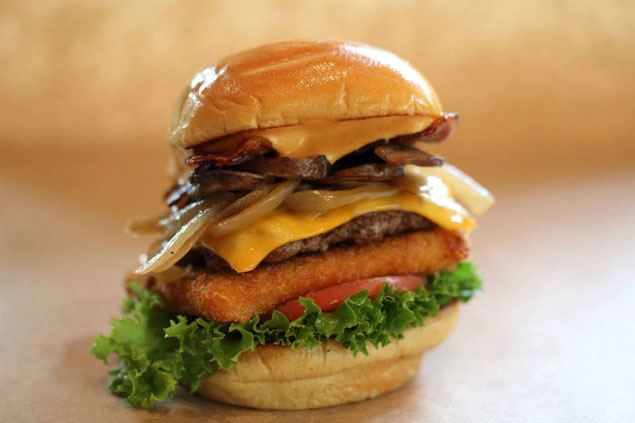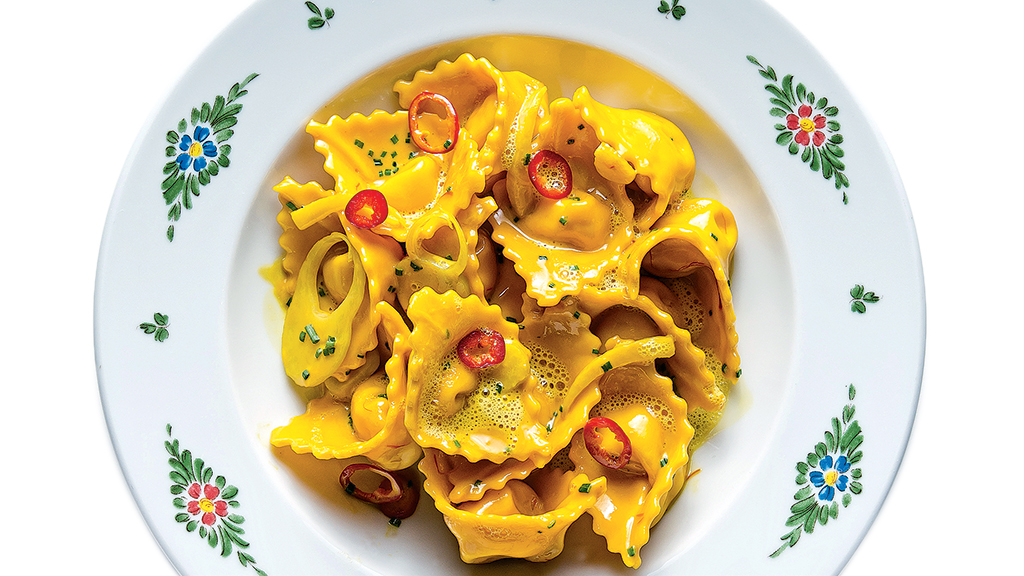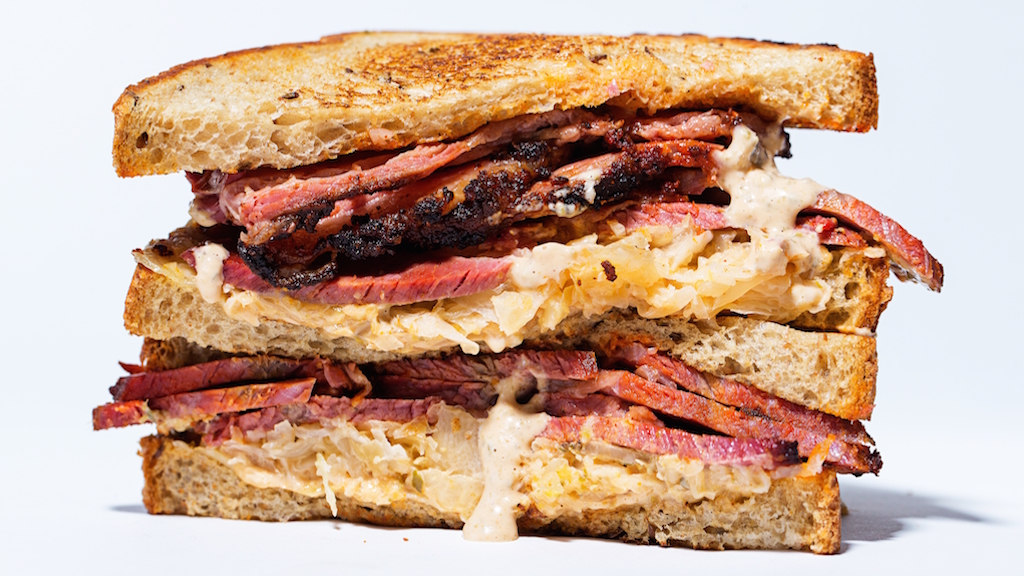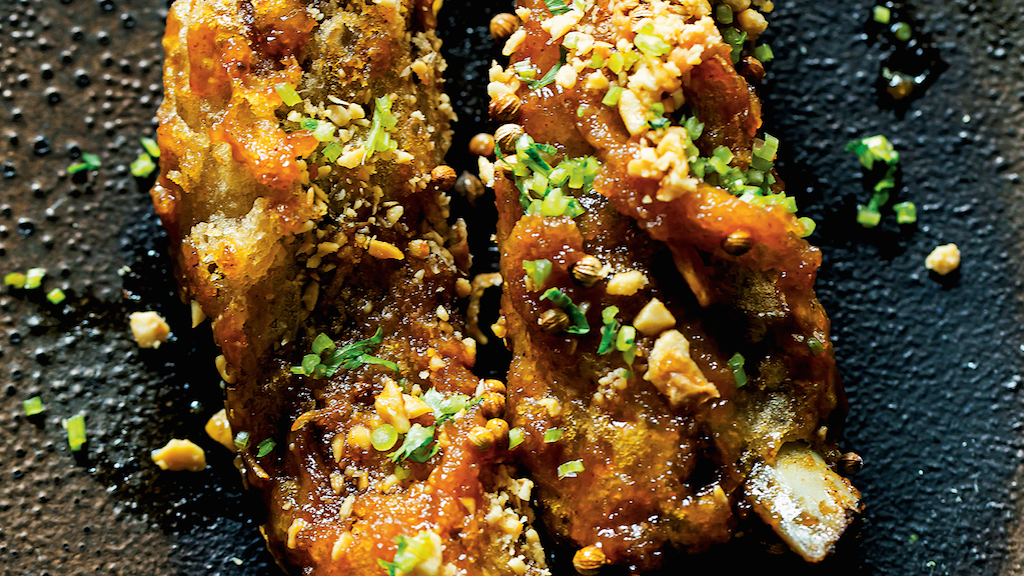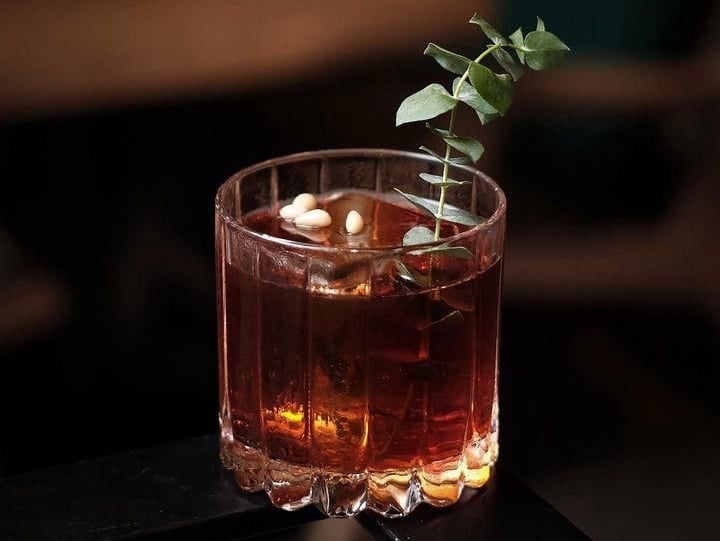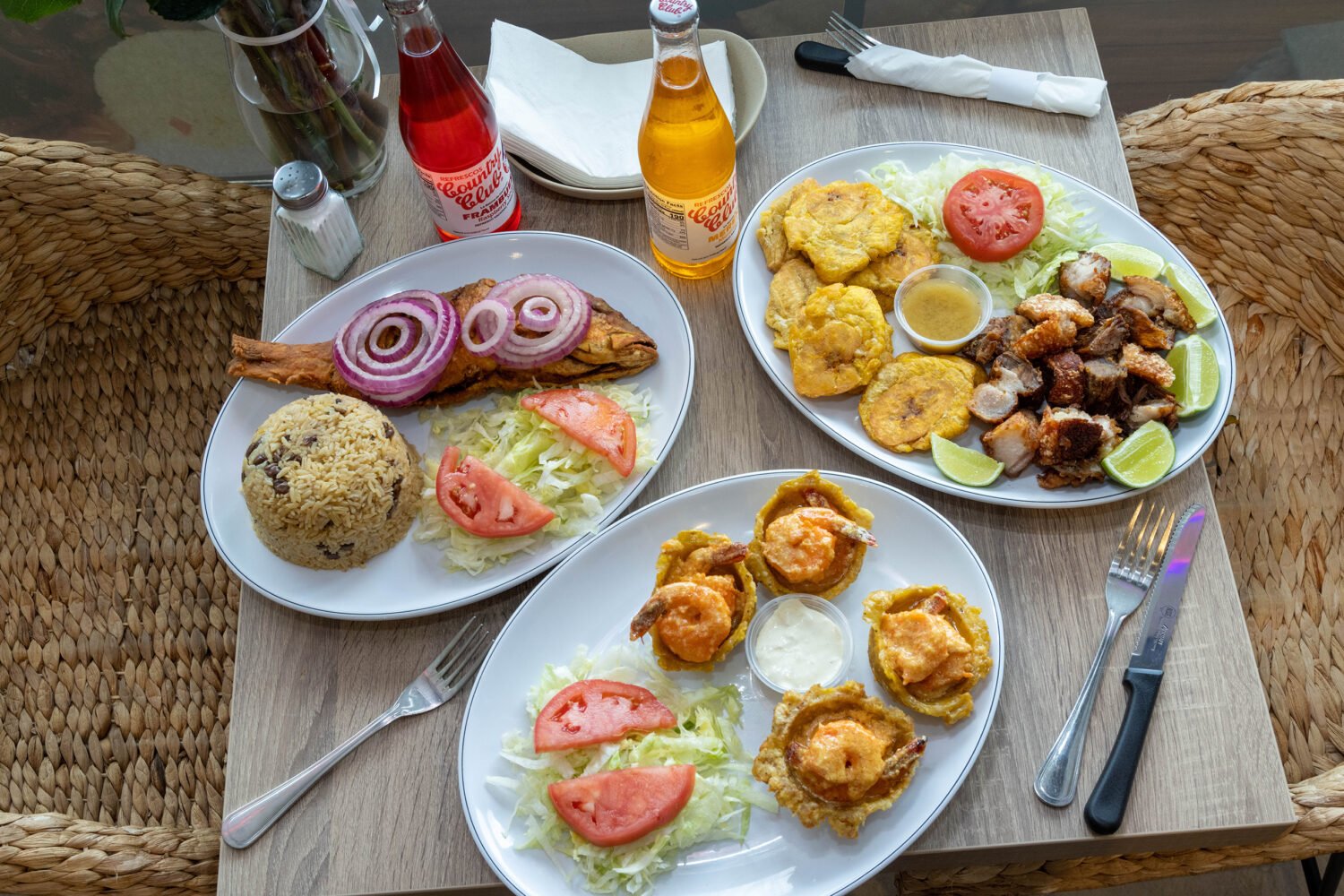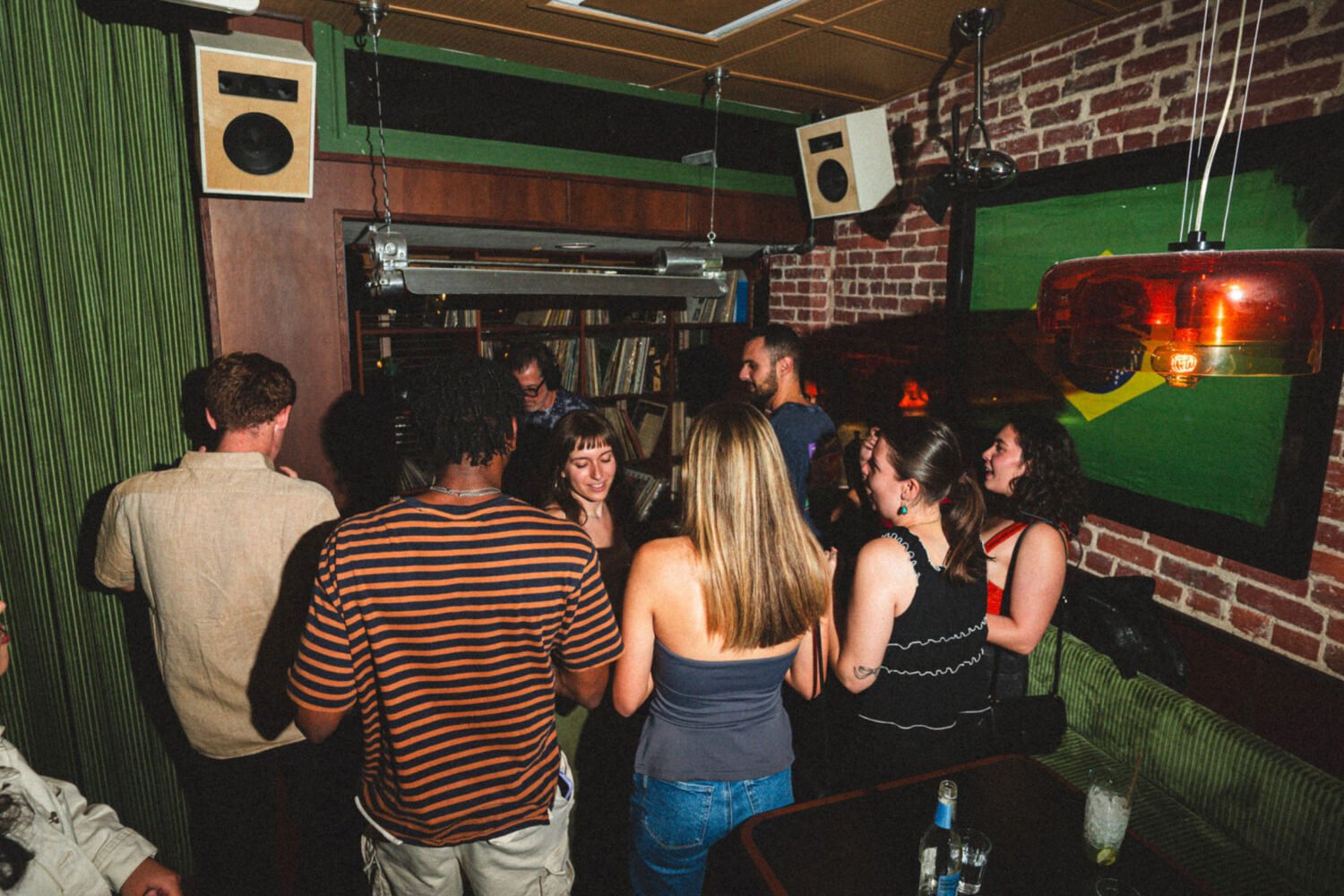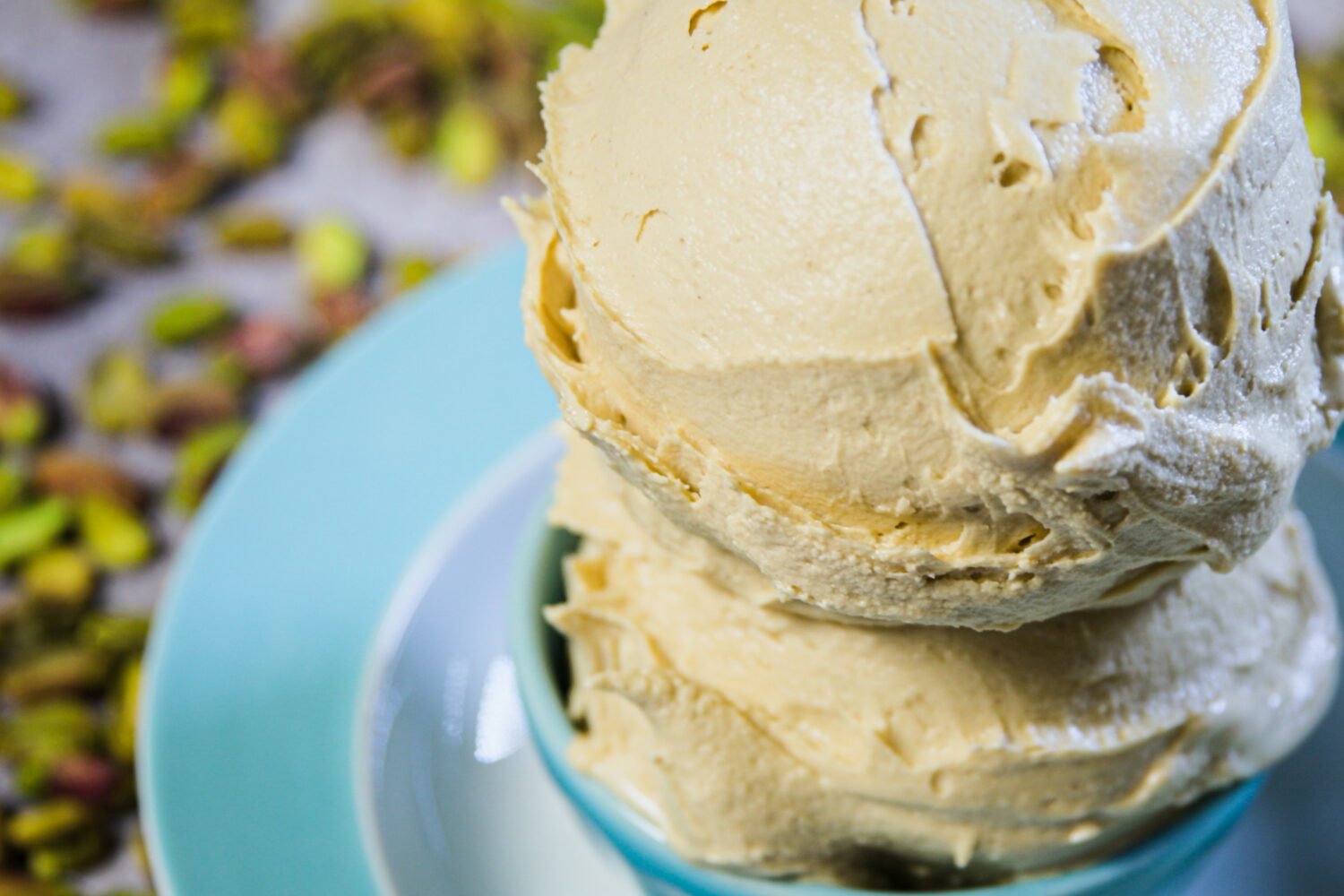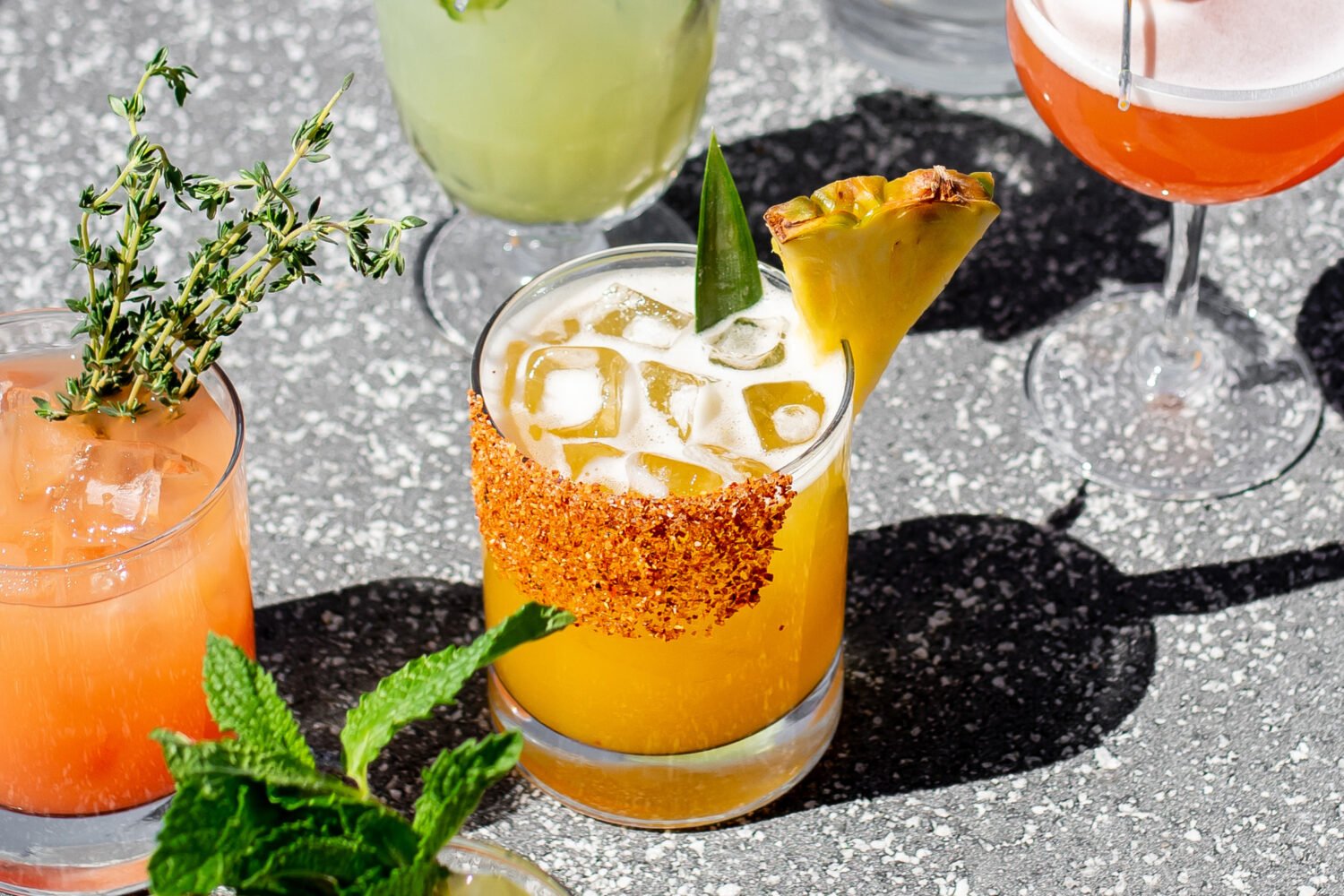Todd Kliman
Beet salad at the Rogue Gentleman (Richmond)
Somewhere along the way, beets got big, and every bistro, cafe, and restaurant felt compelled to put them on the menu—almost always in a pairing with goat cheese, as if this is the combination that had been stipulated in the memo and even the slightest alteration in design was forbidden. I’ve probably eaten 300 different plates of beets and goat cheese over the years. Virtually every one of those plates is the same—not in execution, but in conception. Most are boring. You can taste the lack of conviction with the first bite.
The exceptions are few. One is chef Cedric Maupillier’s version at Mintwood Place, in which the goat cheese is stuffed inside white bread and griddled—a sort of white-trash tartlette—and the beets are sliced on the mandolin to produce long, thin rounds, which are then aggressively peppered and lightly dressed.
And then there’s this dish at the five-month-old Rogue Gentlemen, in Richmond, a pre-Prohibition cocktail bar with excellent and often exacting cooking. I was in town to speak on a panel and give a workshop at the Mid-Atlantic Food Writers Symposium, and had been eager to drop by in my off-hours to see what owner John Maher and Aaron Hoskins are up to at their much buzzed-about place in Jackson Ward.
The dish is not the rethink that Maupillier’s is. But reinvention is not always called for. What is always called for is smart thinking and passionate and precise execution.
The baby beets are fresh and wonderful, and they’re perfectly cooked and perfectly (and simply) seasoned with salt and cracked black pepper. And the complementary touches all do what they’re meant to do and make the star look better—parsley leaves, which you seldom if ever see, but which turn out to be a natural partner for beets; salmon roe, which adds pop, a nice contrasting color, and bursts of salinity; and a sauce of crème fraîche mixed with turnips, the latter not only tempering the sourness of the cream but also subtly and slyly (because you would never know that it was anything but crème fraîche, to look at the pale color) reinforcing the sharp vegetal bite of the beets.
I should also tell you that the plate is beautifully presented, with an eye for color, balance, harmony, and even movement that is reminiscent of the compositions at Jean-Georges.
And that I’m not exaggerating when I say, as I did last week on my chat, that I would gladly get in my car and drive the two-plus hours just to have a meal here again. I would. I will. And soon.
Ann Limpert
City Stacked Bus at City Burger
One of my favorite burgers of all time is at a formica-lined time warp of a place in Manchester, Connecticut, called Shady Glen. It’s of the diner burger ilk, meaning a salty, greasy, smashed-thin patty, but what sets it apart is the cheese: The teenage cooks (in pointy paper soda jerk hats) fan four slices of yellow American off the patty, and let them sizzle on the griddle until they get crispy, curl up, and turn into what looks like a short-order version of The Flying Nun. Then you fold the crunchy, caramelized cheese atop the burger, add your condiments (from a silver relish tray), and eat. It’s amazing—the best five bucks you will ever spend. Why nobody else has picked up this trick, I don’t know.
Enter Michael Harr, whose massive truffle burger at Bethesda’s Food Wine & Co. just landed on the cover of our Cheap Eats issue. At his newly opened burger-and-shake shop across the street, he’s doing a more pedestrian sort of cheeseburger, truffle-free and served on a squishy bun. It’s tasty enough, but I couldn’t help longing for Shake Shack. Still, there’s one burger on the menu that truly stands out: a patty gooey with molten cheese (they say it’s cheddar, but it tastes like American) and stacked with bacon, loads of sweet pickles, mushrooms, caramelized onions, and—the clincher—another slice of deep-fried cheese.
I’m not going to say it’s in the same echelon as Shady Glen, but if you’re not up for a 350-mile trip, it’s a pretty darn good substitute.
Anna Spiegel
Skuna Bay salmon from BlackSalt Fish Market
People often ask where I go to buy the best fresh fish. The most frequent answer: BlackSalt, though I’ve also recently discovered pristine fin fare at the newish District Fishwife in Union Market. Jeff and Barbara Black’s Palisades shop is worth the trip, whether you’re looking for special-occasion-quality steamed lobsters or a simple piece of extremely fresh and flavorful fish. I was in the mood for the latter when I dropped by and bought the best salmon filet I’ve cooked in ages.
Salmon, while abundant in local markets, is tricky quality-wise. Most is farmed, and can be tasteless and flabby. Even wild cuts from Whole Foods are hit-or-miss (a recent portion from the P Street branch was passable, but lacked much natural flavor). Skuna swims the line between farmed and wild; the “craft-raised” Vancouver Island fish are sustainably cultivated in their natural Pacific Ocean environment, which you can read about on the family-run operation’s website. Thoughtful aquaculture results in salmon that tastes like it’s coming from a top restaurant’s kitchen, which is part of the reason some of the country’s best chefs source from Skuna Bay. Grill or pan-sear the filets to medium to let the clean, buttery flavor shine, and crisp that delicious skin to golden brown if you can.
While you’ll find this salmon pricey, at $24.99 per pound, my favorite preparation is simple: seared with a crunchy shallot-mustard vinaigrette. Try adding some chopped dill and serving it alongside sweet summer tomatoes drizzled with really good olive oil.

